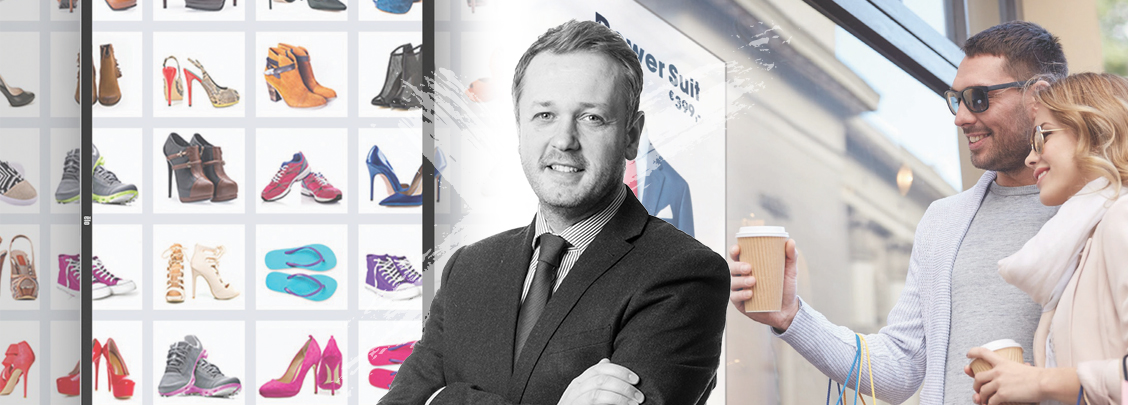Interfacing with the Shopper
Interactivity has already proved its worth in education and corporate, now it’s retail’s turn. You pop into a clothing store and are pleasantly surprised to find the electronic displays showing exactly the look that interests you. It’s no surprise to the retailer, though, because facial recognition cameras have determined your age and gender and tailored the display content to match.
You check out the range at a touch-screen kiosk – no irritating wait to speak to an assistant – and select an outfit, which will be waiting in your changing room. Wrong size? No problem. Scan the barcode and someone will bring you a bigger one. Then it’s off to the touch-screen checkout and on to the next shop. Can’t remember where it is? The interactive wayfinder outside will tell you.
For most retailers a setup like this is still in the realms of imagination. But not for long, believes Richard Bovingdon, head of interactive sales at Midwich. “Interactivity has already proved its worth in markets such as education and corporate, and now it’s receiving serious consideration from retailers,” he says.
Why this blossoming of interactivity in retail? It’s partly familiarity. Consumers are so used to touching their smartphones and tablets that they now expect the same interface in retail environments, whether they’re buying a coat or a car, says Bovingdon.
The cost of interactivity is falling all the time, with touch capability adding just 10% or so to the price of a 65in flat panel or 20% to a larger model. “I think we’ll reach a point where every flat panel except videowalls will have touch as standard,” says Bovingdon.
Almost Zero Touch Latency
And the latest ‘projected capacitive’ (PCAP) touch technology delivers the same levels of touch performance as a tablet or smartphone. “It’s all about the touch experience,” says Bovingdon. “PCAP delivers virtually zero latency so the response is instant, compared with the old infrared touch sensors that could be a bit slow and struggled in bright ambient light.
“The latest technologies such as ELO’s TouchPro PCAP units are sealed against dirt and dust to simplify integration into the final enclosure. And the capability to support touch through glass means they can be mounted on the inside of a shop window.”
Vendors such as ELO and liyama have filled out their interactive ranges and can now offer any display size from 15in to 84in, with inbuilt digital signage players and WiFi connectivity when required. They are also software-agnostic, supporting a range of platforms such as Android, Chromecast and Miracast. These enable system designers to provide the ‘cleverness’ through which interactive technologies deliver their real value, such as facial recognition, content tailoring or data analytics.
Midwich’s broad interactive portfolio includes brands such as ELO, liyama, Smart, Sharp and Samsung, plus cameras, network connectors and associated technology, so its team team of experts can always recommend the right product for the right environment.
“Our Interactive team at Midwich can provide customers with demos and proof of concepts, recommend best-of-breed products for each application, and work with integrators to bring any environment to life with the connected technologies we have available. It’s a complete turnkey solution,” says Bovingdon.
And what’s next for interactivity in retail? Bovingdon foresees a bright future for gesture control and 3D camera imaging, for example in changing rooms that let shoppers see themselves in a variety of outfits without actually having to try them on. And object recognition could enable the retail system to identify the item someone has just picked up and tell them all about its features.
Retail Supplement
This article is from our AV Magazine Retail Special. Visit our Marketing Hub to view the whole supplement along with our other marketing materials, including guides and portals.

 Midwich Limited, Vinces Road, Diss, Norfolk, IP22 4YT
Midwich Limited, Vinces Road, Diss, Norfolk, IP22 4YT